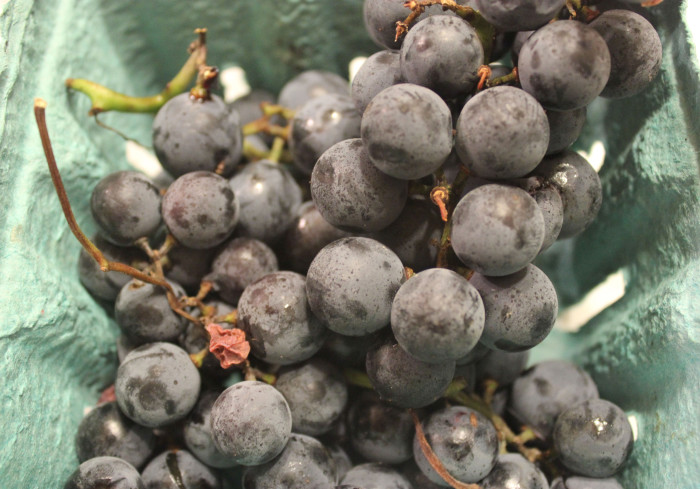One of the treasures of fall is the too brief appearance of Concord grapes. Their color, flavor and texture are unmatched. There is no official “Concord Grape Day” or week or month. So, in defense of this noble grape, in celebration of its unique favor, I’m spending this week promoting Concord grape ideas. Some of these recipes I’ve tested and some I’m in the process of making over the coming week or so. You’ll see recipes for syrup, moustarda, pie, cake, tart, and shrub. You can eat and sip your way through the mighty Concord.
The Concord grape itself is new. Developed in 1849 by Ephraim Wales Bull in Concord, Massachusetts, the Concord is a cultivar from the Vitus labrusca, or Fox Grape, that is native to North America. It took Bull five years to introduce his grape to the market. If the juice is pasteurized, it will not ferment. That made it ideal for a New England pastor for his alcohol-prohibited church. The pastor’s name was one you may recognize, Welch, Thomas Bramwell Church.
The Concord is considered sweet and foxy. The grape is ideal for jelly and the prototype peanut butter and jelly sandwich is based on Concord grape jelly. In terms of wine, Concord grapes are used for Kosher and sacramental wine. With its over the top flavor, you rarely see it on a restaurant wine list.
The grape is grown in just a few areas of the United States: the Finger Lakes in New York as well as Lake Erie, Southwestern Michigan, and the Yakima Valley in Eastern Washington.
I’ll be posting recipes throughout the week. Don’t miss the opportunity to do more than just eat the Concords off the stem. Cook, bake, and sip the wonder of Concord.

